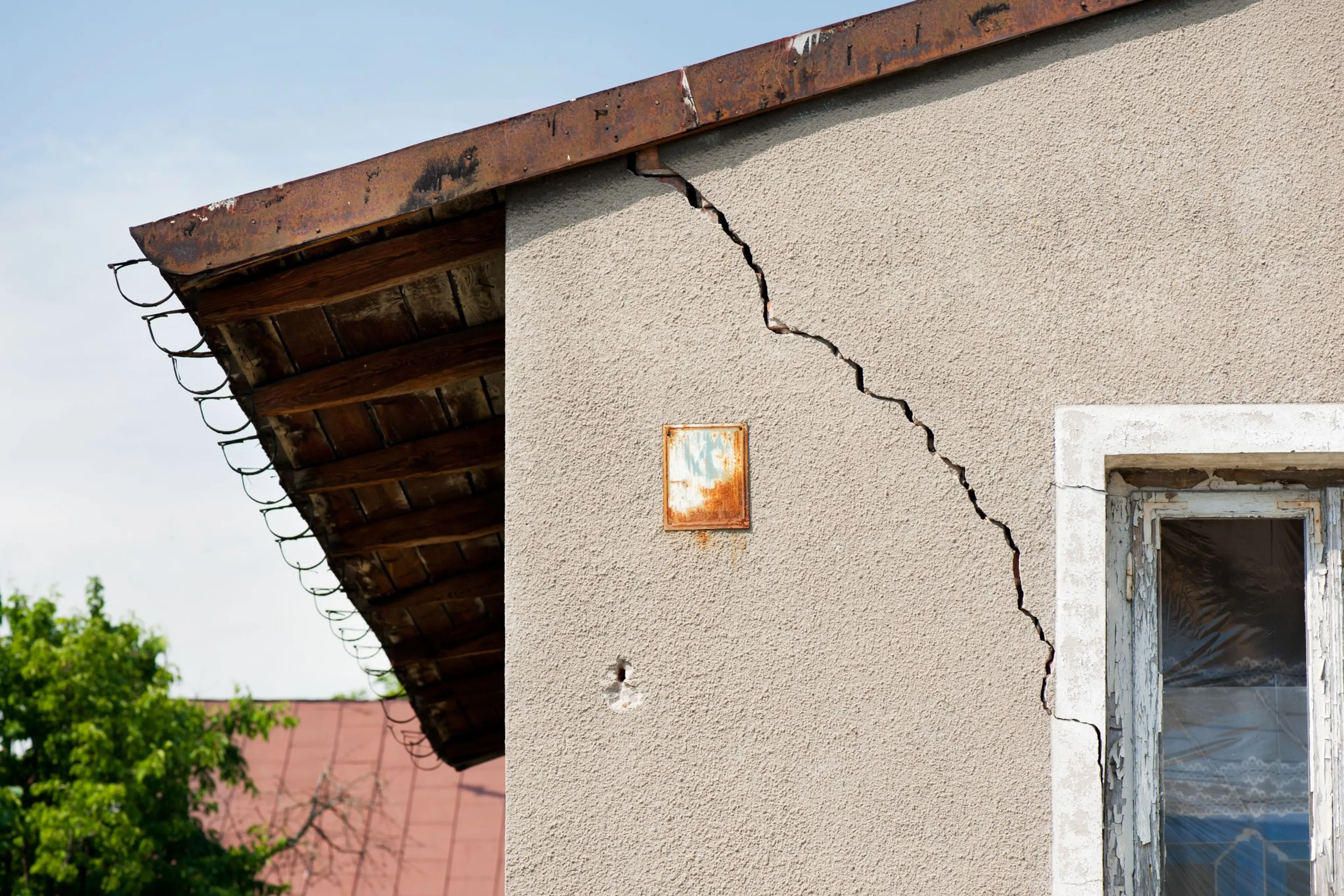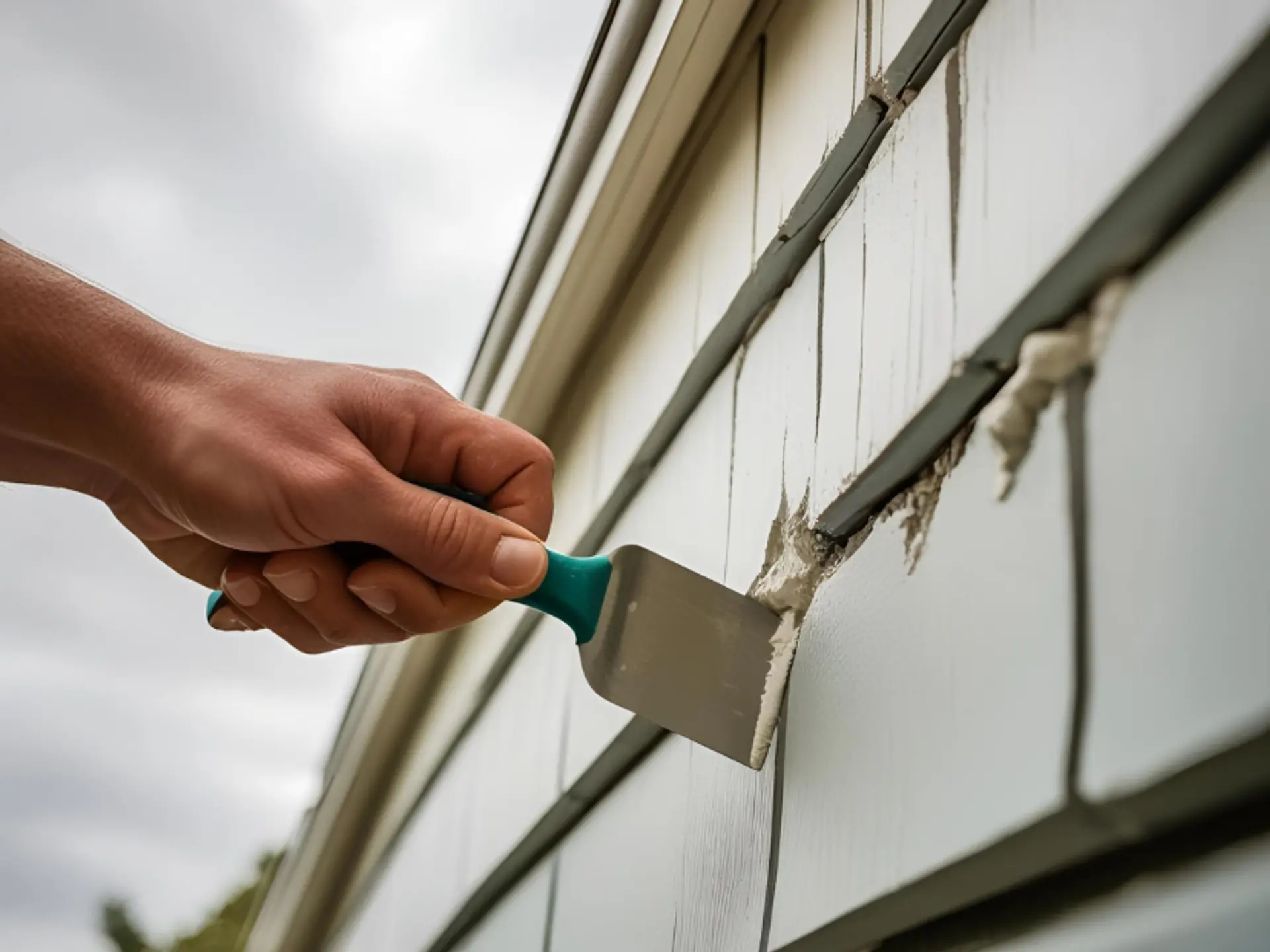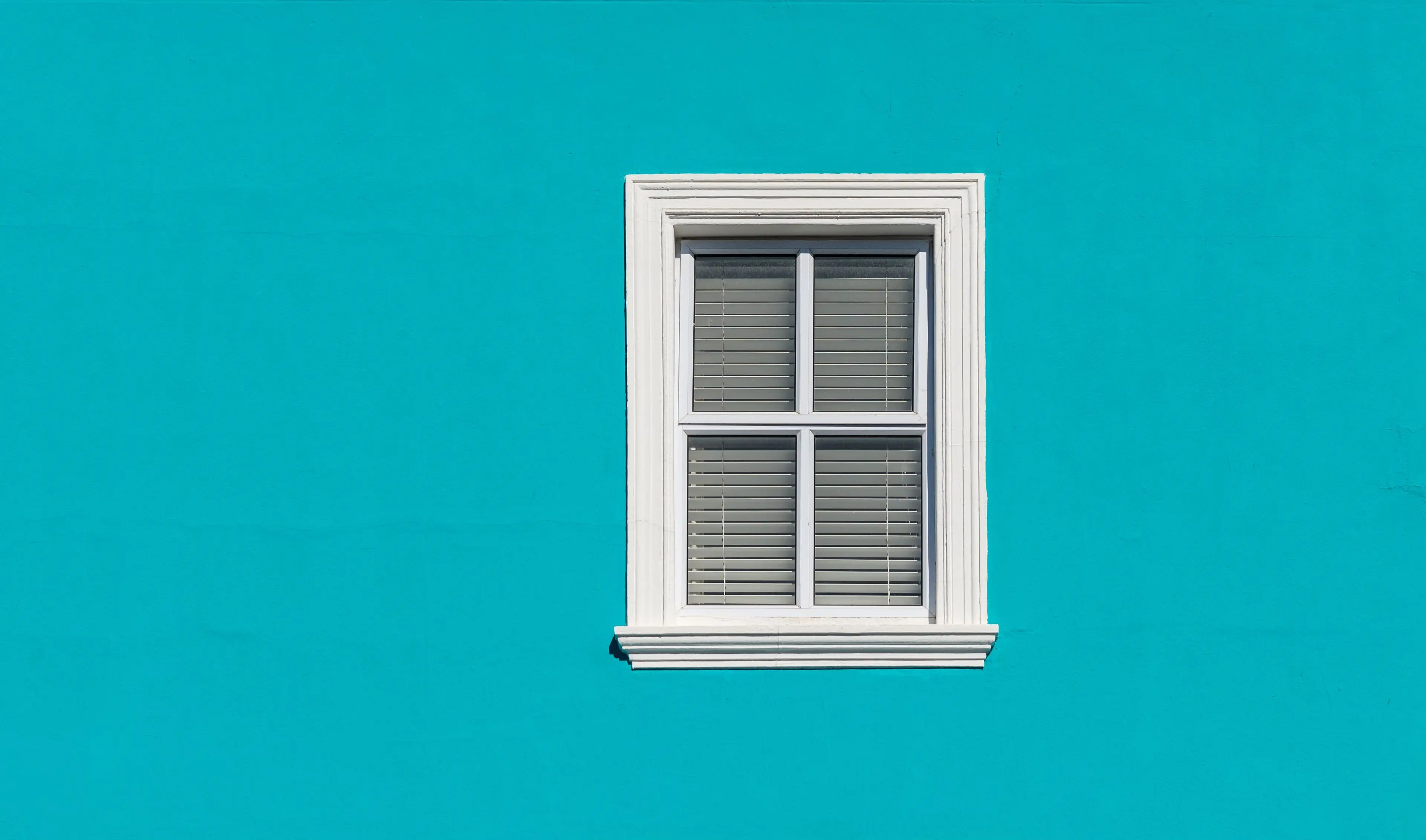Identifying Types Of Exterior Wall Cracks And Tips To Fix Them

 Apr , 2025
Apr , 2025- Exterior
- 5 Min Read
Cracks in external walls come in various forms, including horizontal hairline cracks, vertical cracks, and more. Horizontal hairline cracks in walls are typically caused by the natural settling of a building. Vertical cracks in outside walls may indicate foundation issues or structural movement.
Importance Of Maintaining The Exterior Walls Of A Building
Maintaining the exterior walls is essential for several reasons. First and foremost, it enhances the overall appearance and curbs appeal of your property. Additionally, regular maintenance can prevent water infiltration, which can cause further damage and compromise the structural integrity of the building. By promptly addressing cracks in the external walls, you ensure the longevity and value of your property.
Common Causes Of Exterior Wall Cracks
Various factors contribute to the occurrence of cracks in external walls. Poor construction practices, moisture infiltration, natural disasters, and exposure to harsh weather conditions are the primary culprits. Horizontal hairline cracks in walls can result from inadequate reinforcement or settling of the building. Vertical cracks in outside walls may be caused by foundation issues or structural movement. To prevent external wall cracks, it is crucial to address these underlying causes and take proactive measures to ensure the stability and durability of your house.
Poor Construction Practices
Poor construction practices play a significant role in the development of cracks in external walls. Insufficient reinforcement, improper mixtures of building materials, or inadequate curing can lead to structural weaknesses. These flaws can manifest as horizontal hairline cracks in walls or vertical cracks in outside walls.
Moisture
Moisture infiltration is a common cause of cracks in external walls. Water can seep into the building materials, causing them to weaken and expand. When the moisture evaporates, it leaves behind gaps and cracks in the walls. These cracks may appear as horizontal hairline cracks or more substantial fissures in the external walls. Read about waterproofing solutions.
Natural Disasters
Natural disasters such as earthquakes, floods, and severe storms can subject buildings to intense stress, resulting in cracks in external walls. The immense forces generated during these events can cause structural movement and deformation, leading to vertical cracks in outside walls or more severe damage.
Exposure To Harsh Weather Conditions
Exterior walls are exposed to various harsh weather conditions, which can contribute to the formation of cracks. Temperature fluctuations, especially in regions with freeze-thaw cycles, can cause materials to expand and contract, leading to cracks in external walls. Prolonged exposure to ultraviolet (UV) radiation can also degrade the building materials, making them more susceptible to cracking.
Types of Wall Cracks
Hair-Line Cracks
Hair-line cracks are fine, shallow cracks that often appear on walls or ceilings. Though usually not a structural concern, they can affect the surface finish and aesthetics.
Dimensions And Common Causes
Cracks in plaster surfaces usually remain below 1 mm in width. Three main factors create such cracks: plaster drying shrinkage, slow-building subsidence, and thermal expansions from changing temperatures. These defects appear in new houses and recently renovated buildings. Correct preparation techniques and suitable final finishing materials help to control these issues.
Stair-Step Cracks
Stair-step cracks appear along mortar joints in a zig-zag or staircase pattern, commonly found in brick walls. These cracks can signal deeper structural issues.
Dimensions And Common Causes
Stair-step cracks vary in width and may start small but can widen over time. They often result from foundation movement, soil settlement, or structural stress. If these cracks appear suddenly or continue to grow, it’s best to consult a structural expert promptly to prevent potential damage or costly repairs.
Tips To Fix Exterior Wall Cracks
- Identify the type and severity of the crack before proceeding with repairs.
- Clean the crack and remove any loose debris or old filler material.
- Choose the appropriate wall crack filler or crack seal for walls based on the type of crack.
- Apply the filler or sealant according to the manufacturer’s instructions.
- Allow the repair to dry and cure properly before painting or applying a protective coating.
Inspections And Assessment
Before repairing cracks in external walls, conduct a thorough inspection to identify the extent of the damage. Assess the underlying causes and potential structural issues. Seek professional advice if needed to ensure accurate assessment and suitable repair solutions. This will help determine the best approach for effective exterior wall crack repair and prevent further damage.
Hiring A Professional
For complex or extensive exterior wall cracks, it is recommended to hire a professional with experience in wall crack repair. Professionals have the expertise to assess the situation, identify underlying issues, and employ appropriate repair techniques. Their knowledge of suitable wall crack fillers, crack seal for walls, and repair materials ensures a long-lasting and structurally sound solution to the exterior wall cracks.
Tools And Materials
Depending on the type and severity of the crack, the tools and materials required for wall crack repair may include a trowel, putty knife, wire brush, chisel, sandpaper, caulking gun, and safety equipment. In terms of materials, options range from epoxy-based fillers for larger cracks to flexible sealants for smaller ones. Selecting the right tools and materials is crucial for a successful exterior wall crack repair.
Types Of Materials Needed For Different Types Of Cracks
The choice of materials for repairing cracks in external walls depends on the type of crack. For vertical cracks, epoxy or polyurethane-based fillers are commonly used. Horizontal cracks may require crack stitching techniques or carbon fiber reinforcement. Diagonal cracks often necessitate flexible sealants or mortars. Consult professionals or product guidelines to determine the appropriate materials for specific crack types.
Tools Required For Wall Crack Repair
To repair exterior wall cracks, you may need tools such as a trowel or putty knife for applying fillers, a wire brush or chisel for cleaning the crack, sandpaper for smoothing the surface, and a caulking gun for dispensing sealants. It is important to have safety equipment like gloves and goggles to protect yourself during the repair process. Choose tools suitable for the specific repair technique.
Repair Techniques
Various repair techniques can be employed for exterior wall crack repair. These include filling the crack with a suitable filler or sealant, applying crack stitching to reinforce the cracked area, or using carbon fiber reinforcement for horizontal cracks. The choice of technique depends on the type and severity of the crack, and consulting professionals will help determine the most effective approach for long-lasting results.
Step-By-Step Instructions For Repairing Different Types Of Cracks
- Identify the type of crack (vertical, horizontal, or diagonal).
- Clean the crack and remove debris.
- Apply the appropriate filler or sealant for the specific crack type.
- Follow the manufacturer’s instructions for application and drying time.
- Smooth the repaired area and allow it to cure before further treatment.
Precautions And Safety Measures
- Wear appropriate safety gear, including gloves and goggles, during the repair process.
- Work in a well-ventilated area to avoid inhaling fumes from sealants or fillers.
- Follow manufacturer instructions for handling and disposal of materials.
- Use caution when working on ladders or elevated surfaces.
- If unsure or dealing with extensive damage, consult a professional for assistance and guidance.
Best Waterproofing Solutions To Prevent Wall Cracks
The correct early application of appropriate waterproofing solutions can stop additional damage to wall cracks present in new or existing buildings. High-quality crack fillers constitute an essential selection criterion. HomeShield Crack Fill Paste serves as a reliable solution to repair minor through moderate cracks that appear within and outside plaster surfaces.
This paste is non-sagging, meaning it stays in place after application and doesn’t drip or shift, ensuring a neat finish. It’s also extremely easy to apply, making it ideal for both professionals and homeowners who prefer do-it-yourself solutions. One of its notable advantages is tint compatibility—you can mix it with water-based tints to match the wall colour, achieving a more seamless repair.
In addition, it’s non-toxic and eco-friendly, making it a safer option for home use without needing any special handling tools. Its flexibility helps it withstand slight wall movements, reducing the chances of cracks reappearing. Overall, solutions like these provide a convenient, long-lasting approach to waterproofing and maintaining the aesthetic integrity of your home.
Why Choose Berger Paints For Wall Crack And Joint Waterproofing Services?
Berger Paints differentiates itself through waterproofing services which combine top-quality materials with expert installations. Berger Paints delivers services that specifically repair wall cracks and joint gaps by providing exact and caring solutions. Berger applies special formulations that create durable coatings designed to adjust to both site-specific surfaces along with environmental elements.
Their solutions exist to provide long-lasting durability by means of protective measures for minor surface cracks or the prevention of damage to vulnerable areas. Application professionals perform detailed methods during waterproof assignments to guarantee clean completed surfaces and total coverage. The waterproofing products from Berger that include crack fillers stand out because they are user-friendly for any application while remaining flexible and maintaining compatibility with current wall surfaces. Berger Paints delivers reliable wall protection systems exactly how they are designed while maintaining high standards of craftsmanship which enables durable results throughout time.
check for any query you have about the blog
Frequently Asked Questions
Cracks in outside walls are commonly caused by temperature changes, moisture seepage, foundation settling, or poor construction materials. These factors lead to surface stress and movement, resulting in visible cracks. Over time, such cracks can widen, allowing water ingress and weakening the structural integrity if not addressed early.
To fix wall cracks, clean the area and apply a suitable filler. Products like HomeShield Crack Fill Paste are ideal, as they’re non-sagging, flexible, and easy to apply. They bond well with plaster surfaces, helping seal cracks effectively while blending smoothly with wall finishes for a lasting repair.



